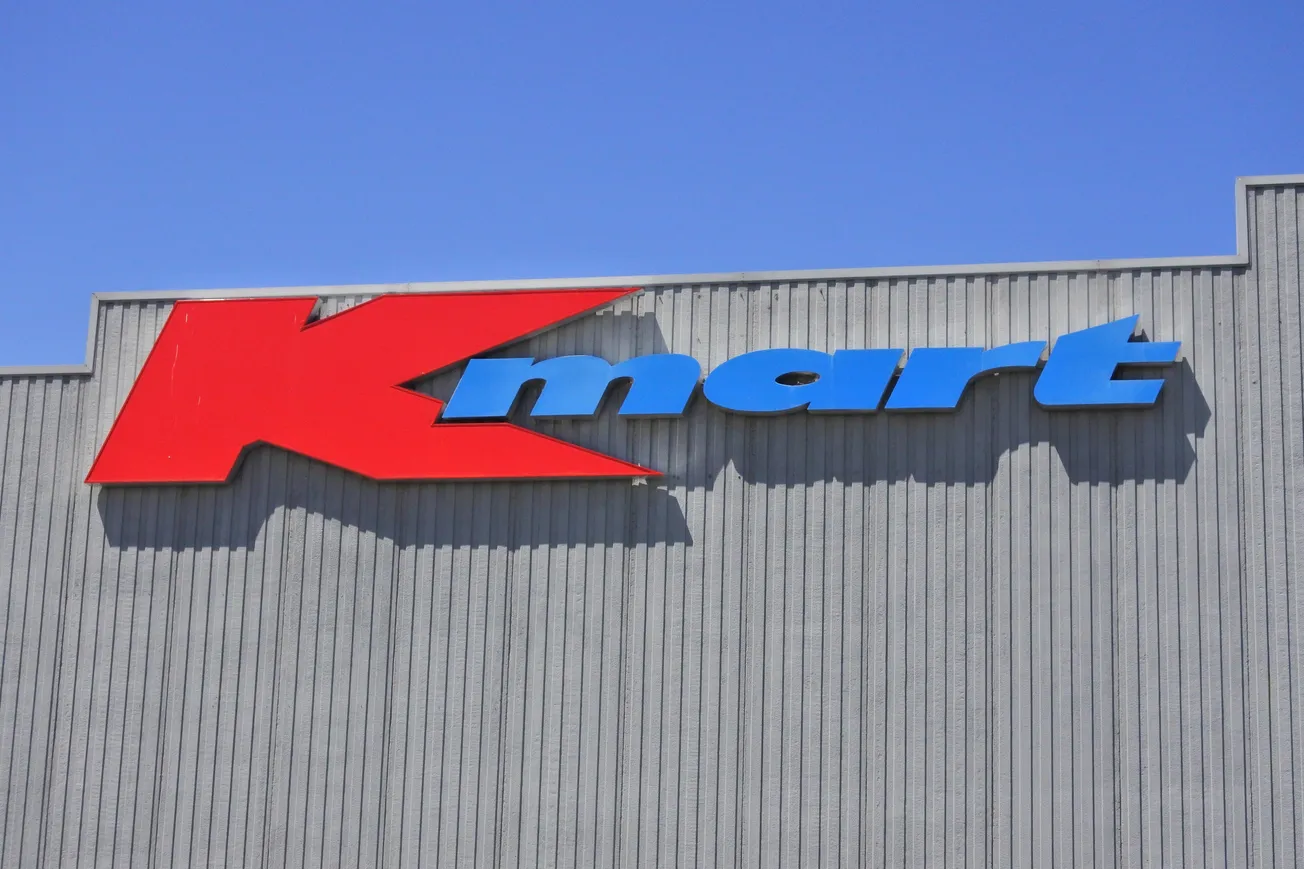Kmart's final closure of its full-sized store in Bridgehampton, New York, on October 20 marks the end of an era for a retailer that once held a significant place in American retail history.
Kmart was once a powerhouse in the American retail industry. Founded in 1962, it grew quickly, becoming a staple in suburban communities across the United States.
The brand was known for its discount pricing and innovative “blue light specials,” which fostered a sense of excitement in shopping. At its peak in the early 1990s, Kmart operated more than 2,300 stores across the United States, offering a range of products from apparel to home goods.
While a smaller convenience-focused Kmart remains in Miami and a few stores continue to operate in territories like Guam and the U.S. Virgin Islands, the brand's presence has dwindled dramatically from its peak in the 1990s when it operated over 2,000 locations.
The decline of Kmart is closely tied to its merger with Sears in 2005, forming Sears Holdings. The merger was initially intended to create a stronger entity by leveraging operational synergies, real estate assets, and a broader brand portfolio.
In 2005, Kmart merged with Sears, forming Sears Holdings under the leadership of Eddie Lampert. The merger aimed to leverage the combined real estate assets of both brands and to streamline operations. The hope was that the newly formed entity would be better positioned to compete with Walmart and other emerging threats.
However, the merger faced skepticism from industry analysts, who noted that combining two struggling retailers rarely results in a stronger competitor.
The merger primarily focused on managing real estate assets rather than reinvigorating the retail experience. Lampert's strategy involved selling off prime locations for short-term liquidity, which undermined the long-term potential of both Sears and Kmart.
The merger combined two struggling companies that lacked a clear strategy for competing with more aggressive discount retailers like Walmart, which capitalized on lower prices and advanced logistics, and Target, which developed a stronger brand appeal.
However, the seeds of Kmart's decline were sown long before its merger with Sears. The retailer struggled with operational inefficiencies, outdated store layouts, and an inability to keep pace with Walmart's advanced logistics capabilities.
Walmart's focus on supply chain optimization allowed it to offer lower prices, appealing to the same budget-conscious shoppers Kmart aimed to attract. Meanwhile, Target carved out a niche with a more upscale discount experience, leaving Kmart caught in the middle without a clear market positioning.
Sears Holdings' approach contrasted sharply with Walmart's reinvestment in technology, logistics, and store improvements. Walmart's investment in its ecommerce platform, Walmart.com, and initiatives like curbside pickup allowed it to adapt to changing consumer behaviors. In contrast, Sears and Kmart lagged behind in creating a seamless online shopping experience.
While Walmart thrived by focusing on logistics and maintaining a massive physical footprint, Amazon's rise added another layer of competition. Amazon's ecommerce model and rapid delivery network changed consumer expectations. With the launch of Amazon Prime, consumers became accustomed to fast and often free shipping, making it challenging for traditional retailers to compete.
Walmart's response to Amazon's dominance included acquisitions like Jet.com, which bolstered its ecommerce capabilities, and a focus on expanding its grocery delivery services. Walmart's ability to integrate its vast store network with its online platform positioned it as a formidable competitor to Amazon. This dual-channel approach enabled Walmart to serve customers who preferred in-store shopping while also catering to the growing demand for online convenience.
Kmart, on the other hand, struggled to find a niche in this evolving landscape. Its ecommerce presence remained weak, and the company did not invest sufficiently in the digital infrastructure necessary to keep pace with competitors. As a result, Kmart’s market share continued to shrink, and store closures became more frequent.
One of the central components of Kmart's post-merger strategy involved the management and sale of its real estate assets. Under Lampert’s leadership, valuable Kmart locations were sold to generate immediate cash flow, which was used to manage debt and fund operational needs. While this approach provided short-term relief, it diminished the brand's ability to maintain a physical presence in key markets.
Walmart's real estate strategy took a different approach, focusing on expanding its Supercenter model and optimizing locations for maximum customer reach. Walmart's stores became hubs for both traditional retail and new services like grocery pickup, allowing it to adapt to the needs of modern shoppers. Amazon, though primarily an online retailer, also invested in physical locations through acquisitions like Whole Foods, using the stores as strategic points for distribution and customer engagement.
Kmart’s focus on liquidating real estate assets, rather than using them as strategic retail hubs, left the company without the flexibility to adapt to the evolving needs of consumers. This approach made it difficult for Kmart to leverage its physical presence as a competitive advantage, especially as Walmart and Amazon blurred the lines between digital and brick-and-mortar retail.
While Kmart's presence in the continental U.S. has dwindled, a few international locations remain. Stores in the U.S. territories of Guam and the Virgin Islands continue to operate under the Kmart name. These stores benefit from being in regions where there is less competition from major U.S. retailers like Walmart and Target, as well as a local customer base that is accustomed to the brand.
In Guam, for instance, Kmart has maintained a significant presence as one of the primary discount retailers. It caters to a market that does not have the same saturation of competitors and where the cost and logistics of shipping goods can make it more difficult for newer entrants like Amazon to establish a foothold. In these locations, Kmart can serve as a convenient option for locals and tourists alike, who value its familiar product offerings and discount pricing.
However, the future of these international stores remains uncertain. As retail trends continue to shift towards digital and omnichannel models, even remote markets will eventually face pressure from online competitors. If Kmart's parent company, Transformco, does not invest in updating the customer experience or exploring online sales avenues, these remaining stores may face challenges similar to those that led to the brand's decline in the United States.
Kmart's decline and the ongoing struggles of Sears offer valuable lessons for the broader retail sector. One of the key takeaways is the importance of adapting to consumer behavior. As shoppers increasingly expect a seamless blend of online and offline experiences, retailers that fail to integrate digital tools into their business models risk losing relevance.
The rise of Amazon has shown that success in retail now depends on more than just a strong physical presence. It requires investment in data analytics, logistics, and customer experience. Walmart's ability to blend its physical stores with digital offerings has been a key factor in maintaining its market position. Other retailers, from big-box stores to specialty chains, must continue to adapt by investing in technology and creating unique value propositions for customers.
Kmart's emphasis on asset liquidation rather than strategic reinvestment stands as a cautionary tale. As retail real estate remains a valuable asset, especially in prime locations, companies must carefully balance short-term financial needs with long-term strategic growth.
For Kmart’s remaining international stores, survival will hinge on adapting to the unique needs of their local markets while exploring ways to integrate digital tools into their operations. While Transformco has shown little interest in revitalizing the brand, a focus on serving niche markets or leveraging the nostalgia associated with the Kmart name could provide a path forward.
In examining Kmart's trajectory, it's clear that a failure to adapt to changing retail trends—particularly the shift to digital and omnichannel strategies—left it vulnerable to the rapid advances of competitors like Walmart and Amazon. The merger with Sears, meant to stabilize two declining giants, ultimately compounded their challenges, leading to a steady reduction in Kmart's store footprint and influence in the retail sector.
Kmart’s story is a reminder that retail is a dynamic industry where consumer preferences and technology rapidly reshape the landscape. The fall of one of America’s retail giants underscores the importance of foresight and adaptability in staying relevant. Retailers that continue to innovate and meet the evolving demands of customers will be best positioned to thrive in the future, while those that fail to evolve may face the same fate as Kmart.










